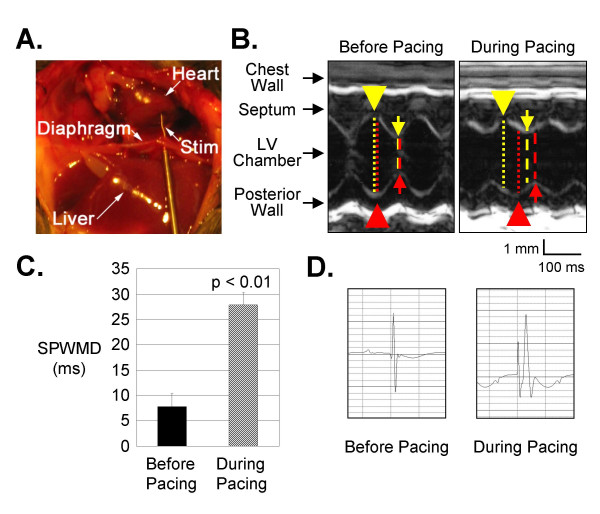Figure 1.
Pacing from the Subdiaphragmatic Approach is Associated with Mechanical Dyssynchrony. A) For illustrative purposes only, a mid-line sternotomy was performed after the pacing experiment to demonstrate that the tip of the stimulating electrode is positioned at the epicardial surface of the right ventricle. B) M-mode echocardiography reveals dyssynchrony of ventricular contraction during subdiaphragmatic pacing with a substantially greater delay in the time between septal (yellow arrow) and posterior wall thickening (red arrow) compared to non-paced baseline. C) Septal-to-Posterior Wall Motion Delay (SPWMD), a measurement of the time interval between septal and posterior wall systolic thickening as demonstrated in Panel A, is significantly prolonged during pacing in comparison to the SPWMD measured prior to initiation of pacing. D) A surface electrocardiogram recorded during pacing demonstrates a wide and aberrantly conducted paced complex in comparison to a sinus beat recorded before pacing.

